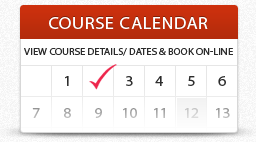ARCHIVE NEWS
ISO/IEC 17020:2012 One year until the March 2015 transition deadline – are you ready?
With the second edition of ISO/IEC 17020 published in March 2012, Inspection Bodies have been given a 3 year transition period to implement the new requirements so that by March 2015 they will have successfully transferred to the new standard as accreditation certificates to the 1998 standard will no longer be valid.
The majority of Accreditation Bodies have been combining the transition to the ISO/IEC 17020:2012 standard with the Inspection Body’s regular assessments where possible and generally, all Accreditation Bodies are now performing assessments only to the 2012 standard. For transition assessments, the submission of corrective actions is being required by late summer into early autumn 2014, depending on the Accreditation Body. Non-conformities will need to be addressed and implemented by early 2015 in order for accreditation to the new standard to be granted by March 2015.
For example, in order to allow Inspection Bodies time to implement and monitor the effectiveness of the new requirements, have their transition assessment conducted by their Accreditation Body and ensure appropriate time is allocated for the processing of corrective actions, UKAS are recommending that corrective actions are received by the end of October 2014 as all mandatory findings must be effectively addressed before the transition deadline of 1st March 2015.
Before an Inspection Body undergoes its transition assessment by their Accreditation Body, they will need to provide some form of implementation action plan, such as a gap analysis or cross-reference documentation, which analyses the impact of the new standard on the existing system and demonstrates how the organisation will be implementing the new requirements. The Inspection Body will also need to conduct an Internal Audit to assess the implementation of the new system and to confirm they are operating to the new ISO/IEC 17020:2012 standard.
Some of the new requirements include:
- A ‘risk-based’ approach to identifying activities or relationships that could jeopardise impartiality, i.e. the Inspection Body will need to address how risks are identified and document actions taken to minimise or eliminate risk
- Requirements relating to confidentiality have been expanded, addressing legally enforceable commitments, such as contractual requirements
- The introduction of the concept of ‘preventive’ as well as ‘corrective’ actions with a procedure documenting how preventive actions are addressed. Internal audits and follow-up of corrective actions have been brought in line with how this is required in ISO 9001, i.e. elimination of causes to prevent recurrence, defining actions taken and implementation of preventive actions
- Training, authorisation and competency requirements have been expanded so that Inspectors not only need to demonstrate a level of qualification, but competence also. This links to the requirement ensuring that inspection activities are carried out competently and in a safe manner
- An appeals procedure is now mandatory for all Inspection Bodies including a documented description of the Inspection Body’s handling process
- A list of elements which must be included in an inspection report or certificate has been specified
- Inspection Bodies are given the option for how management system requirements are fulfilled, either by meeting the requirements contained within ISO/IEC 17020:2012 or ISO 9001
- Evidence of commitment and implementation by top management with the Management Review conducted at least once a year












